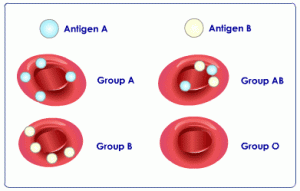Food allergies are caused when an IgE antibody is produced in response to a protein from the food in question. This has lead scientists to believe that IgE could be a potential drug target for allergy treatments. From C&EN:
One treatment aimed at IgE that’s already commercially available is omalizumab. Comarketed by Genentech and Novartis under the brand name Xolair, this therapeutic is a monoclonal antibody designed to mop up free IgE in a person’s body.
“An ordinary antibody to IgE could kill people,” says Tse Wen Chang, originator of the anti-IgE concept and a distinguished research fellow at Academia Sinica, in Taiwan. That’s because if the antibody stuck to IgEs that were already bound to mast cells and basophils, the interaction might trigger anaphylaxis via histamine and those other inflammatory compounds.
“So you can imagine that when I approached people initially with the idea, they were very concerned,” Chang says. This was in 1989, soon after Chang had cofounded a small biopharmaceutical firm called Tanox. He was looking for a corporate partner to fund the company’s anti-IgE program.
Chang eventually convinced Tanox’ potential partners and others in the immunology field that his IgE antibodies were safe. He demonstrated that the therapeutics, screened and selected during synthesis, bind free IgE and not mast-cell-bound IgE. After a partnership with Novartis, a few infamous legal disputes with Genentech, some clinical trials, and an eventual buyout by Genentech in 2007, Tanox disappeared from the pharma scene.
But the anti-IgE concept, in the form of Xolair, has lived on. The monoclonal antibody was approved in 2003 by the Food & Drug Administration for use in patients with moderate to severe persistent cases of asthma. The injectable therapeutic is now involved in more than 100 clinical trials for various types of allergies, including for the treatment of chronic hives and eczema.
Xolair hasn’t made as much headway, though, in treating food allergies, Chang says. A small study, published last year, aimed to test whether peanut-allergy sufferers could benefit from regular injections of the antibody (J. Allergy Clin. Immunol., DOI: 10.1016/j.jaci.2011.01.051). But the trial was discontinued because a few patients had severe anaphylactic reactions to test-doses of peanuts—given to them prior to Xolair—and a safety committee deemed the experiment too risky.
….
So food allergists haven’t given up on Xolair. Instead of being used by itself, the antibody is now being administered in combination with oral immunotherapy: Phase I and Phase II trials are under way to see whether the therapeutic can improve the outcome of milk- and peanut-allergy treatments.
